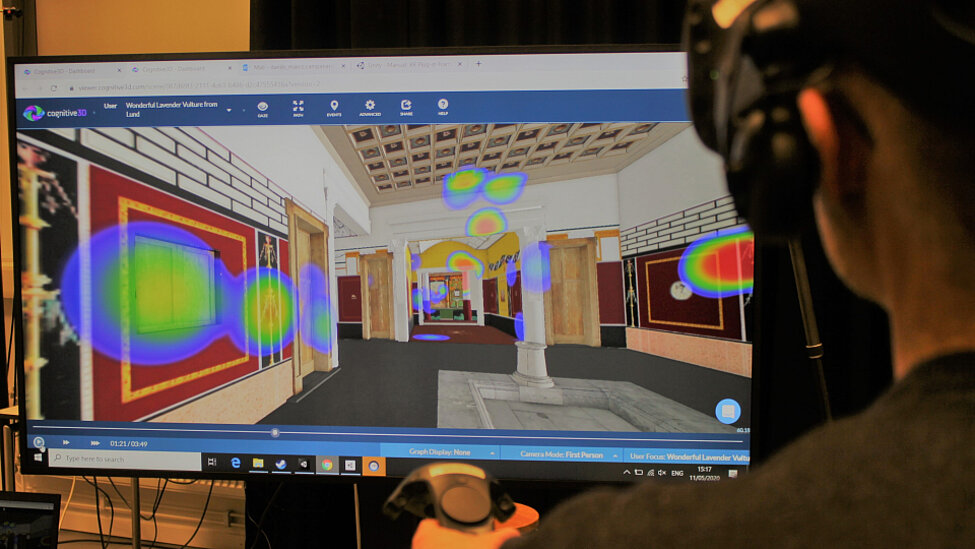Giacomo Landeschi (Humanities Lab, and Department of Archaeology and Ancient History) and Danilo Marco Campanero (Department of Archaeology and Ancient History) have recently published an article about the potential of combining virtual reality, eyetracking and 3D GIS, in order to collect and analyse data on visual experience in reconstructed 3D-models of ancient buildings. The work has attracted widespread interational interest as it demonstrates the use of emerging technologies for breakaing new methodological ground in its field, and is the result of a collaboration between the Digital Archaeology Lab (DARKlab) and the Humanities Lab.
Link to publication:
Campanaro, D., & Landeschi, G. (2022). Re-viewing Pompeian domestic space through combined virtual reality-based eye tracking and 3D GIS. Antiquity, 1-8. doi:10.15184/aqy.2022.12
Link to news article on the Department of Archaeology and Ancient History's website:
https://www.lunduniversity.lu.se/article/how-did-visitors-experience-domestic-space-pompeii
Link to news article on the Lund University main website:
https://www.lunduniversity.lu.se/article/how-did-visitors-experience-domestic-space-pompeii

